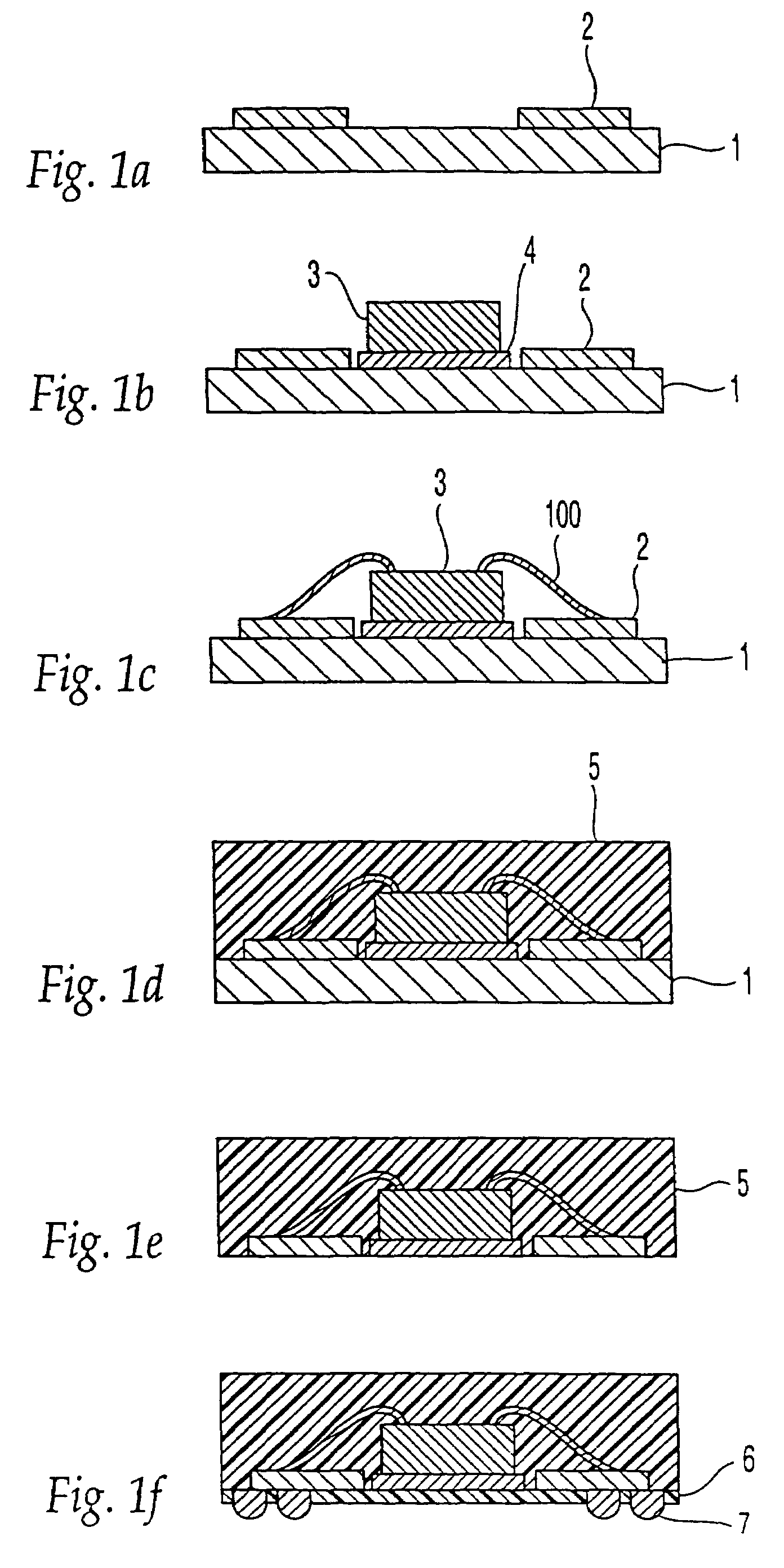Fabrication process of semiconductor package and semiconductor package
a technology of semiconductor packaging and semiconductor packaging, which is applied in the manufacture of printed circuits, basic electric elements, printed circuit assembling, etc., can solve the problems of warping in the package due to a difference in thermal stress between the mother board and the package, and the type of printed wiring boards is also accompanied by, so as to reduce the effect of strain elimination, lessen the relaxation effect, and eliminate the residual strain
- Summary
- Abstract
- Description
- Claims
- Application Information
AI Technical Summary
Benefits of technology
Problems solved by technology
Method used
Image
Examples
specific example 1
[0162]A two-layer flexible base material having an electrolytic copper foil of 12 μm in thickness on one side thereof (“MCF 50001”, trade name; product of Hitachi Chemical Co., Ltd.) was provided. A dry film resist (“PHOTEC HK815”, trade name; product of Hitachi Chemical Co., Ltd.) was laminated on the copper foil and then exposed and developed, whereby a desired resist pattern was obtained. After the copper foil was etched with a solution of ferric chloride, the resist pattern was stripped with a solution of potassium hydroxide so that a predetermined wiring pattern was obtained. Using an excimer laser beam machine (“INDEX 200”, trade name; manufactured by Sumitomo Heavy Industries, Ltd.), as many holes as needed (diameter: 300 μm) were formed at predetermined positions so that they extend from a side of an insulating base material and reach a back surface of the wiring pattern. The following conditions were set for the excimer laser beam machining—energy density: 250 mJ / cm2, reduc...
specific example 2
[0168]A two-layer flexible base material having an electrolytic copper foil of 12 μm in thickness on one side thereof (“MCF 50001”, trade name; product of Hitachi Chemical Co., Ltd.) was provided. A dry film resist (“PHOTEC HK815”, trade name; product of Hitachi Chemical Co., Ltd.) was laminated on the copper foil and then exposed and developed, whereby a desired resist pattern was obtained. After the copper foil was etched with a solution of ferric chloride, the resist pattern was stripped with a solution of potassium hydroxide so that a predetermined wiring pattern was obtained. Using an excimer laser beam machine (“INDEX 200”, trade name; manufactured by Sumitomo Heavy Industries, Ltd.), as many holes as needed (diameter: 300 μm) were formed as many as needed at predetermined positions so that they extend from a side of an insulating base material and reach a back surface of the wiring pattern. The following conditions were set for the excimer laser beam machining—energy density:...
specific example 3
[0174]On a shiny surface of an electrolytic copper foil of 35 μm in thickness and 250 mm squares in external shape, a photosensitive dry film resist (“PHOTEC HN640”, trade name; product of Hitachi Chemical Co., Ltd.) was laminated, followed by exposure and development so that a desired resist pattern (minimum line / space=50 μm / 50 μm) was formed. As many as 300 (4 blocks / 250 mm squares, 75 patterns / block) identical wiring patterns which were each consisted of 0.2 μm thick nickel, 30 μm thick copper, 5 μm thick nickel and 1 μm thick soft gold were next formed by an electroplating method. The resist pattern was next stripped off using a 3 wt. % solution of potassium hydroxide of 35° C. The resultant assembly was dried at 85° C. for 15 minutes and then cut into the individual blocks. Using a semiconductor-device-mounting die-bonding material (“HM-1”, trade name; product of Hitachi Chemical Co., Ltd.), semiconductor devices were then bonded. The bonding conditions were set as follows—pres...
PUM
 Login to View More
Login to View More Abstract
Description
Claims
Application Information
 Login to View More
Login to View More - R&D
- Intellectual Property
- Life Sciences
- Materials
- Tech Scout
- Unparalleled Data Quality
- Higher Quality Content
- 60% Fewer Hallucinations
Browse by: Latest US Patents, China's latest patents, Technical Efficacy Thesaurus, Application Domain, Technology Topic, Popular Technical Reports.
© 2025 PatSnap. All rights reserved.Legal|Privacy policy|Modern Slavery Act Transparency Statement|Sitemap|About US| Contact US: help@patsnap.com



